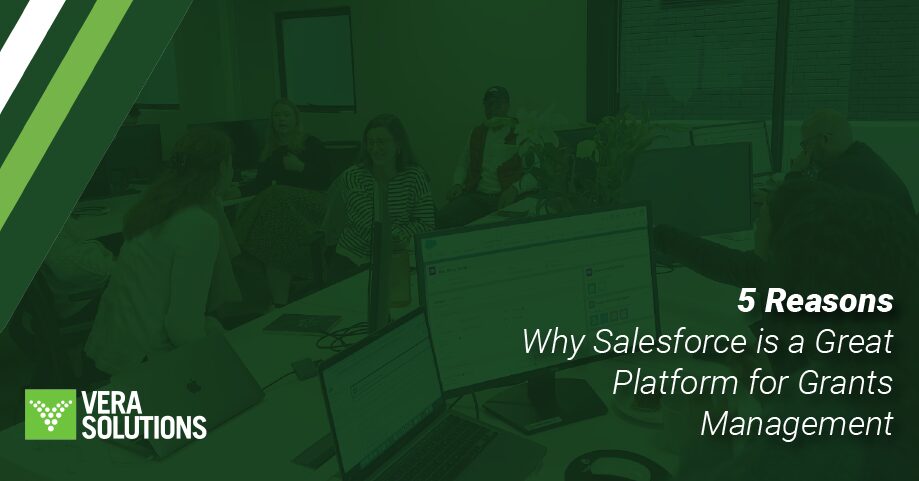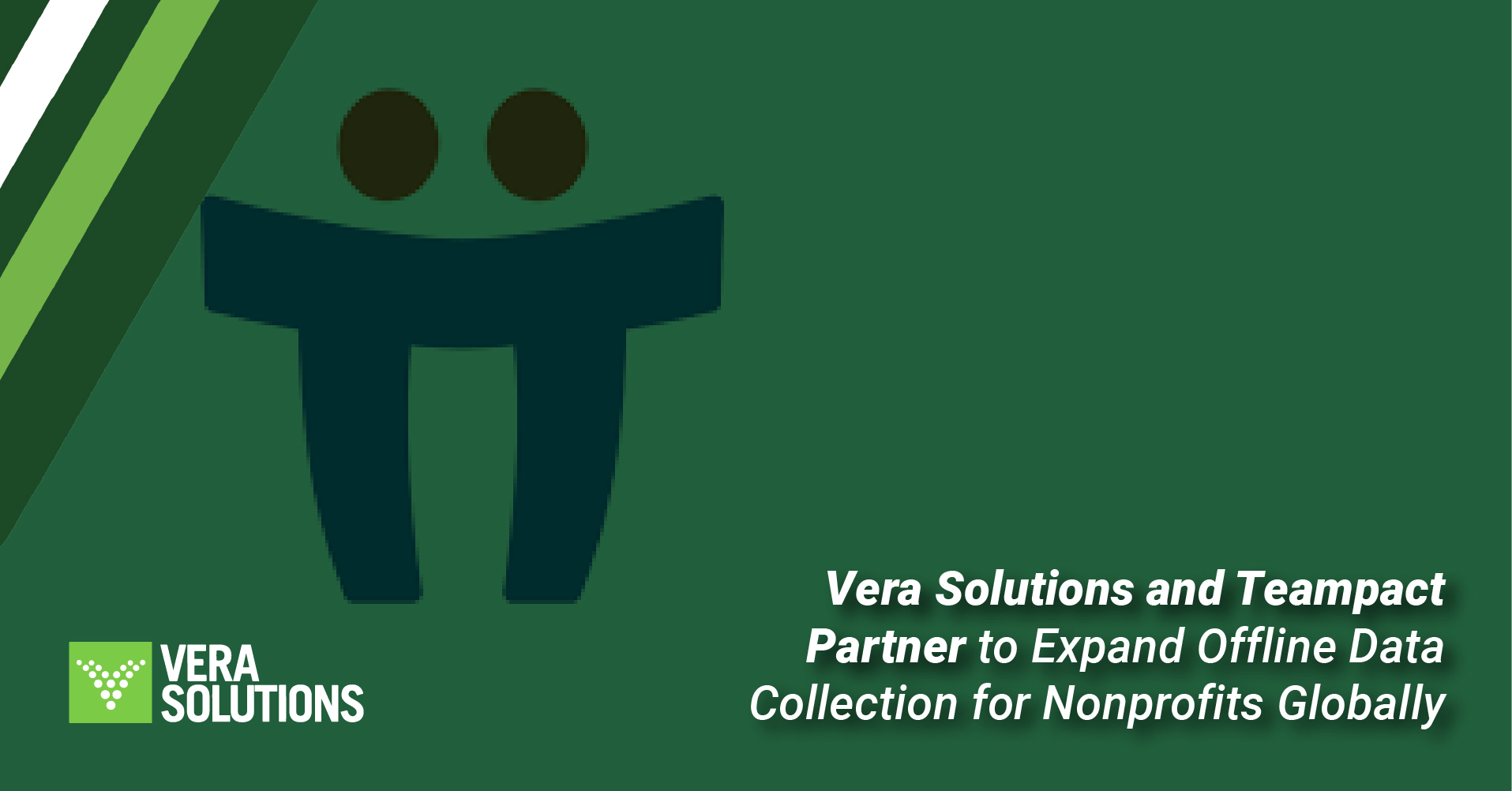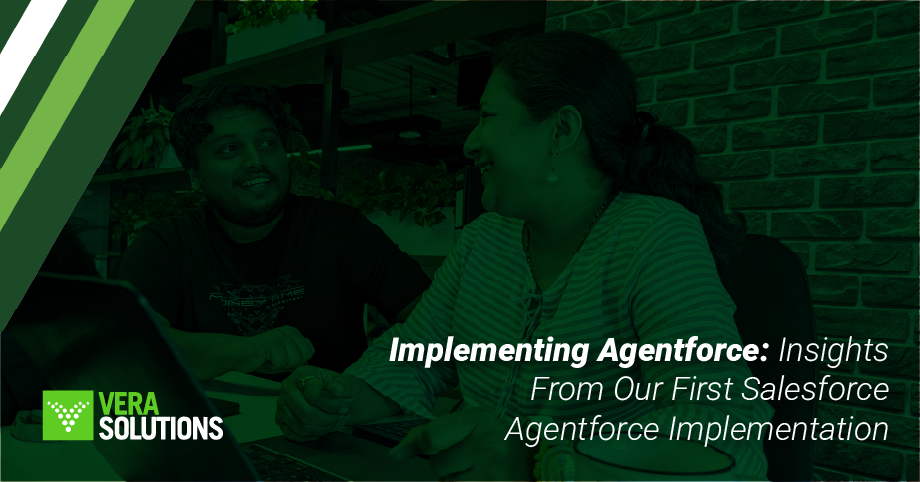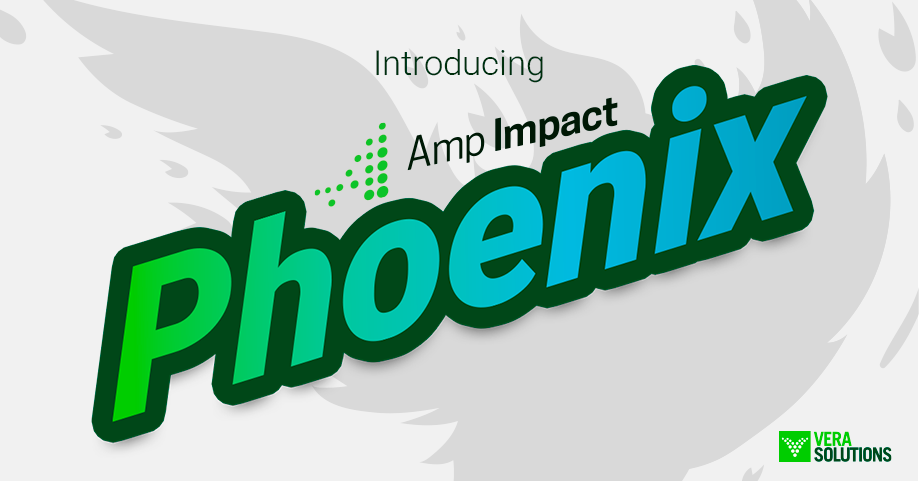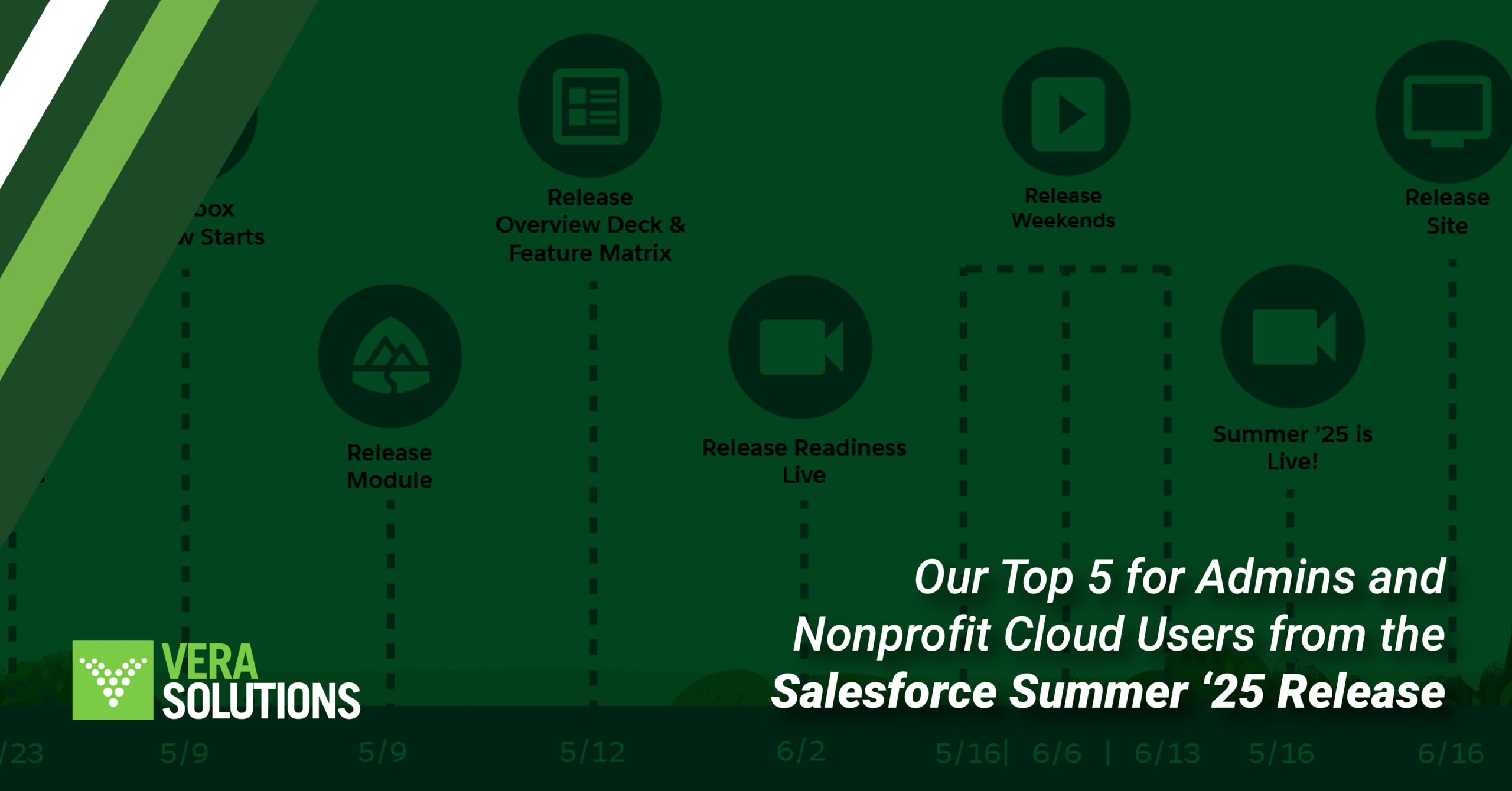Over the last decade, grants management systems (GMS) have evolved from basic spreadsheets and databases to advanced cloud platforms. For grantmakers looking to advance their systems and processes, Grantbook, Peak Grantmaking, Technology Associations and Tech Impact’s 2024 Consumer’s Guide to Grant Management Systems provides a helpful overview of the top GMS tools in the market. Salesforce stands out in this guide with its key offerings, Salesforce Nonprofit Cloud (NPC) for Grantmaking and Amp Impact, both of which are built on the Salesforce Platform.
For 14 years, Vera Solutions has been developing portfolio management and impact measurement solutions on Salesforce, including over 100+ grant management systems. Each time we assessed various tools, Salesforce came out on top, earning our trust as the best data platform for nonprofits.
In this blog, we explain why we believe Salesforce is a standout choice and a valuable investment for grantmakers around the world. With so many options out there, picking the right system can be tough. However, after seeing how grants management systems on Salesforce have evolved over time, we believe there are five reasons why Salesforce continues to be a top choice for grants management.
For 14 years, Vera Solutions has been developing portfolio management and impact measurement solutions on Salesforce, including over 100+ grant management systems. Each time we assessed various tools, Salesforce came out on top, earning our trust as the best data platform for nonprofits.
In this blog, we explain why we believe Salesforce is a standout choice and a valuable investment for grantmakers around the world. With so many options out there, picking the right system can be tough. However, after seeing how grants management systems on Salesforce have evolved over time, we believe there are five reasons why Salesforce continues to be a top choice for grants management.
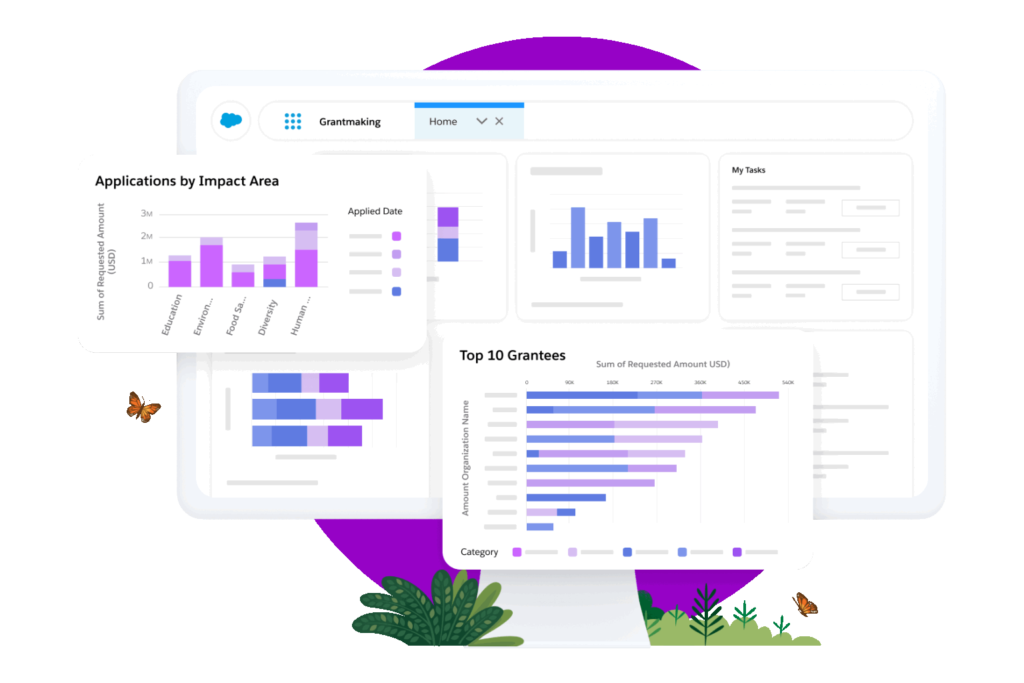
5 Advantages of Using Salesforce for Grant Management
1. Prebuilt Standard Functionality for Grantmakers
Both NPC for Grantmaking and Amp Impact are Salesforce solutions designed for grants management. They offer a complete solution for managing every step of the grant process, from calls for proposals and application reviews to grantee portals for progress reporting.
While Amp Impact offers more robust impact measurement/outcome management functionality as well as the ability for users to create Form Templates (eg., for Applications, Reviews, Reports), NPC for Grantmaking brings in additional tools like Interaction Summaries, Flexi Cards, and Omnistudio, which require additional customization but can enhance user interaction and experience. Organizations using NPC can integrate these tools with Amp Impact objects.
Amp Impact – used by organizations like the Elton John AIDS Foundation, Save the Children, and EIT Climate KIC, provides detailed features for tracking grant outcomes, indicators, targets, and results over time periods and across locations. It also includes advanced tools for risk management, narrative reporting, and fund management. These features can be used on their own with any Salesforce license or can be bolted onto NPC or NPC for Grantmaking objects.
In short, grantmakers have an array of pre-built solution options they can leverage when implementing Salesforce for grants management – this can save time and money while de-risking the implementation process.
While Amp Impact offers more robust impact measurement/outcome management functionality as well as the ability for users to create Form Templates (eg., for Applications, Reviews, Reports), NPC for Grantmaking brings in additional tools like Interaction Summaries, Flexi Cards, and Omnistudio, which require additional customization but can enhance user interaction and experience. Organizations using NPC can integrate these tools with Amp Impact objects.
Amp Impact – used by organizations like the Elton John AIDS Foundation, Save the Children, and EIT Climate KIC, provides detailed features for tracking grant outcomes, indicators, targets, and results over time periods and across locations. It also includes advanced tools for risk management, narrative reporting, and fund management. These features can be used on their own with any Salesforce license or can be bolted onto NPC or NPC for Grantmaking objects.
In short, grantmakers have an array of pre-built solution options they can leverage when implementing Salesforce for grants management – this can save time and money while de-risking the implementation process.
2. High Configurability
When it comes to managing grants, Salesforce-based solutions like Amp Impact and NPC for Grantmaking, offer best-in-class flexibility and configurability. We often point out that, while Amp Impact typically covers 50-70% of what grantmakers need out-of-the-box, Salesforce provides the additional configurability needed to achieve a 100% solution. The result is an adaptable system that can not only meet an organization’s needs now but also be adapted to meet their needs in the future.
The same holds true for Nonprofit Cloud for Grantmaking that comes with basic grantmaking functionality already built on the platform but is also well positioned to leverage the platform’s flexibility and configurability to improve the overall functionality and build of a grant management system.
With Amp Impact, grantmakers can easily create and adjust templates for applications, concept notes, reviews, and reports using a straightforward drag-and-drop form building tool. This tool supports short and rich text, numbers, multi-select picklists, dates, file uploads, and conditional logic, enabling organizations to move from a hodge-podge of disconnected webforms and document templates.
As highlighted in the the recently published Consumers Guide to Grants Management Systems, Amp Impact’s uniqueness lies in its monitoring and evaluation (M&E) features, its additional functionalities for managing risks and submissions, and its ability to work with any Salesforce license, even the most basic NPC for Grantmaking also offers the ability to manage complex application processes (a new feature released in Summer 2024), though it requires more advanced customization using Omnistudio.
Both Amp Impact and NPC for Grantmaking utilize Salesforce’s advanced CRM tools to simplify tracking interactions and relationships. Salesforce’s Flow functionality can help automate tasks like application reminders, review assignment, and report reminders, reducing manual work and simplifying complex processes. Integration with tools like Power BI and Tableau improves this by offering detailed analytics and interactive dashboards making it easier for organizations to analyze data and make informed decisions.
For example, global humanitarian organization Save the Children effectively uses Salesforce and Amp Impact to track and manage grantee metrics and results. With Amp Impact, the team monitors targets and results for their programs, evaluates progress towards goals, and generates reports and dashboards on their impact.
The same holds true for Nonprofit Cloud for Grantmaking that comes with basic grantmaking functionality already built on the platform but is also well positioned to leverage the platform’s flexibility and configurability to improve the overall functionality and build of a grant management system.
With Amp Impact, grantmakers can easily create and adjust templates for applications, concept notes, reviews, and reports using a straightforward drag-and-drop form building tool. This tool supports short and rich text, numbers, multi-select picklists, dates, file uploads, and conditional logic, enabling organizations to move from a hodge-podge of disconnected webforms and document templates.
As highlighted in the the recently published Consumers Guide to Grants Management Systems, Amp Impact’s uniqueness lies in its monitoring and evaluation (M&E) features, its additional functionalities for managing risks and submissions, and its ability to work with any Salesforce license, even the most basic NPC for Grantmaking also offers the ability to manage complex application processes (a new feature released in Summer 2024), though it requires more advanced customization using Omnistudio.
Both Amp Impact and NPC for Grantmaking utilize Salesforce’s advanced CRM tools to simplify tracking interactions and relationships. Salesforce’s Flow functionality can help automate tasks like application reminders, review assignment, and report reminders, reducing manual work and simplifying complex processes. Integration with tools like Power BI and Tableau improves this by offering detailed analytics and interactive dashboards making it easier for organizations to analyze data and make informed decisions.
For example, global humanitarian organization Save the Children effectively uses Salesforce and Amp Impact to track and manage grantee metrics and results. With Amp Impact, the team monitors targets and results for their programs, evaluates progress towards goals, and generates reports and dashboards on their impact.
3. Interoperability
Salesforce’s Application Programming Interfaces (APIs) are incredibly powerful and versatile for integrating the platform with other tools and systems. If you’ve asked about Salesforce’s integration capabilities, you might have heard it can connect with almost anything and that’s true, as long as the other tool has decent APIs.
The Salesforce ecosystem includes many tools and pre-built connectors, so you don’t need to replace all the existing tools you use for email, document management, collaboration, HR, finance, and marketing. Instead, you can connect them to Salesforce to keep your data and teams synchronized.
Here’s how Salesforce-based grants management systems can make the most of the platform’s integration capabilities:
- Form Tools: You can integrate a webform tool like Formstack, FormAssembly, Titan, or SurveyVista to capture web-based forms from outside of Salesforce and bring the data immediately into Salesforce objects for further review and processing. All of these tools have friendly form UIs, form builders, and mapping interfaces to help bring data into Salesforce.
- Financial Systems: Connect with financial or ERP systems to account for grant allocations and disbursements. Integrations can be built point-to-point with code or declaratively using middleware tools like OpenFn, MuleSoft, or Boomi. Some accounting tools like NetSuite and Sage Intacct come with pre-built Salesforce connectors. We’ve also built integrations with Business Central, Unit4, Microsoft Navision, and D365.
- HR Systems: You can integrate HR systems to manage staff roles and costs related to grants. There are numerous native Human Resource Information System (HRIS) tools built on the Salesforce Platform, like Sage People, Flair, and Releco. You can also integrate with an off-platform HR solution like Workday, using middleware tools or code.
- Business Intelligence: You can embed business intelligence dashboards not only from standard Salesforce analytics but also from other tools such as Tableau, CRM Analytics, and Power BI into your system using pre-built connectors. Alternatively, you can bring your GMS data out of Salesforce into a data lake or data warehouse that feeds a BI tool with data from other non-integrated systems.
4. Community of Practice
In the last 20 years, Salesforce has been widely adopted by the nonprofit community. Salesforce has continually improved its platform, and partners around the world have provided effective solutions on top of it. The presence of Salesforce in the nonprofit sector continues growing stronger, with over 50,000 nonprofits using the platform.
At Vera Solutions, we’ve built a community for 100+ organizations using Amp Impact to manage portfolios and measure impact. Amp customers meet regularly at Amp Impact Summits and other convenings to share their experiences and help shape the Amp Impact roadmap.
Events like the Amp Summit, Salesforce’s nonprofit events, and online communities help grantmakers connect with each other to share their challenges, opportunities, and successes. These interactions are important for achieving organizational goals, and the ecosystem offers many chances for grantmakers to connect, share, and learn from one another.
At Vera Solutions, we’ve built a community for 100+ organizations using Amp Impact to manage portfolios and measure impact. Amp customers meet regularly at Amp Impact Summits and other convenings to share their experiences and help shape the Amp Impact roadmap.
Events like the Amp Summit, Salesforce’s nonprofit events, and online communities help grantmakers connect with each other to share their challenges, opportunities, and successes. These interactions are important for achieving organizational goals, and the ecosystem offers many chances for grantmakers to connect, share, and learn from one another.
5. Promising Future
Salesforce is here to stay, and so are its nonprofit offerings. Salesforce undoubtedly scores high in scalability and should be the go-to choice of platform for grantmakers who wish to keep evolving their processes, add new funding opportunities and be flexible with how each opportunity is managed.
The platform is a top choice for grantmakers who want a system that grows with them, adapts to emerging needs and trends, and manages grantmaking flexibly. Salesforce, Vera Solutions, and our partners constantly seek feedback from grantmakers to improve the platform, ensuring that it delivers valuable solutions for their operations.
For example, Salesforce’s Summer ’24 release introduced new features into NPC for Grantmaking for grant application collaboration, making it easier for teams to work together on applications. Similarly, Amp Impact’s recent Mira release added a highly requested Numerator/Denominator indicator type. This feature allows for automatic calculation of percentages and ratios, including across different disaggregations, simplifying complex reporting.
These ongoing improvements highlight Salesforce’s and Vera’s commitment to the nonprofit sector and promise even more exciting advancements in future updates.
With Amp Impact already supporting numerous grantmakers worldwide and Salesforce’s Nonprofit Cloud for Grantmaking gaining momentum, Salesforce is set to remain a leader in grants management. We love helping funders and grantmakers explore their options in this ecosystem.
The platform is a top choice for grantmakers who want a system that grows with them, adapts to emerging needs and trends, and manages grantmaking flexibly. Salesforce, Vera Solutions, and our partners constantly seek feedback from grantmakers to improve the platform, ensuring that it delivers valuable solutions for their operations.
For example, Salesforce’s Summer ’24 release introduced new features into NPC for Grantmaking for grant application collaboration, making it easier for teams to work together on applications. Similarly, Amp Impact’s recent Mira release added a highly requested Numerator/Denominator indicator type. This feature allows for automatic calculation of percentages and ratios, including across different disaggregations, simplifying complex reporting.
These ongoing improvements highlight Salesforce’s and Vera’s commitment to the nonprofit sector and promise even more exciting advancements in future updates.
With Amp Impact already supporting numerous grantmakers worldwide and Salesforce’s Nonprofit Cloud for Grantmaking gaining momentum, Salesforce is set to remain a leader in grants management. We love helping funders and grantmakers explore their options in this ecosystem.
Why Choose Vera Solutions?
With over 14 years of experience working with nonprofits, Vera Solutions has been a leader in developing grants management, program management, and impact measurement solutions on the Salesforce Platform.
Having taken an advisory role in the Nonprofit Cloud product suite development, we have some key insights and recommendations on where the new Salesforce NPC can add value and drive efficiencies for your organization.
Currently, over $12 billion of programs, grants, and projects advancing the UN Sustainable Development Goals are managed using Vera’s flagship product, Amp Impact. Our team has extensive knowledge of the nonprofit sector and deep experience in delivering the right solutions for a wide range of clients.
We also offer:
Having taken an advisory role in the Nonprofit Cloud product suite development, we have some key insights and recommendations on where the new Salesforce NPC can add value and drive efficiencies for your organization.
Currently, over $12 billion of programs, grants, and projects advancing the UN Sustainable Development Goals are managed using Vera’s flagship product, Amp Impact. Our team has extensive knowledge of the nonprofit sector and deep experience in delivering the right solutions for a wide range of clients.
We also offer:
- A large pool of highly skilled and experienced Salesforce Consultants, with over 300 active Salesforce certifications and counting
- Experience successfully delivering over 1,000 projects in the social sector
- Over 420 customers globally
- A dedicated team located across 5 continents, covering more than 14 languages

